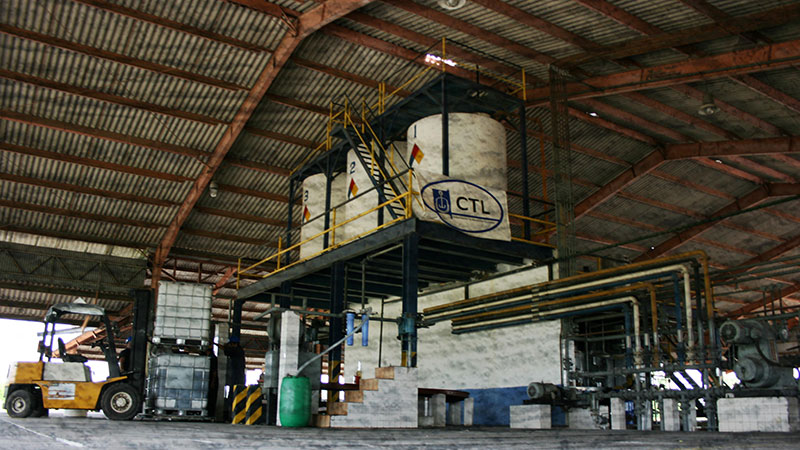National Policy, Market Dynamics Create Changes in China
With the Chinese government’s strengthened support of agriculture since the beginning of 2012, the demand for pesticides has grown steadily in China. Agrochemical output rose 19.3% to reach 2.87 million tonnes in the first 10 months of 2012. Although output of insecticides and fungicides both showed decreases of 7.9% and 9.4%, respectively, compared to the same period in 2011, herbicide production showed a significant 42.5% jump, driven by good sales of glyphosate and 2,4-D, and reached 1.32 million tonnes in total.
Total export output for the first nine months reached 0.75 million tonnes, accounting for 26.2% of total production. Total export value rose 17.3% to $2.36 billion. The unit price of exported products rose slightly. High value-added formulation products exports climbed, increasing access to the high-end markets in Europe and America.
Compared to the export data, the import data looks even better. Imported pesticide value rose 23.2% to $0.48 billion. China imported 54,200 tonnes in the first nine months, which breaks down to $8,879 per tonne. The improvement of import trade was also illustrated by the increased business of multinational companies.
The role of the multinationals’ formulation products has gradually become dominant, while the sale of domestic products has been restricted to some extent. Take the example of the rice planthopper occurrence this year. The prevailing product applied was Bayer’s Merit, and domestically, pymetrozine and buprofezin.
In the competition to prevent rice stem borer and rice caseworm, domestic chlorpyrifos, triazophos and acephate have totally lost ground to their multinational rivals: DuPont’s Rynaxypyr, Bayer’s Belt and Syngenta’s Virtako. This also explains partly why insecticide production has declined.
New policies are giving the industry a great push forward. The revised Pesticide Management Ordinance to be put into place by the end of this year will focus on five aspects as perfecting registration management, strengthening production, quality control, higher operation threshold, promoting safe use of pesticide and clarifying the responsibilities of each regulatory authority. In particular, the permit for pesticide operation will be introduced, which will facilitate an order distribution market. Other policies relating to specific products will have an impact on the production and sales of this industry, and will definitely promote the product structure upgrade.
Pesticide Policy Affects Glyphosate
The first product to be affected by the Pesticide Management Ordinance is glyphosate. Since the beginning of the year, the price of glyphosate has risen slowly, culminating in a 35% rise through November. All of this relates directly to the ban of glyphosate AS with active content below 30%. This ban implied higher environmental protection costs for glyphosate manufacturers that raised the cost of production. In addition, many outdated facilities were forced to close due to the stringent environmental regulations. These two factors lowered overall output.
To avoid the 2008 glyphosate bubble repeating itself, CCPIA’s glyphosate task force is trying to keep the relevant administration departments posted about the real situation of the industry.
One negatively impacted product is paraquat, which has the second-largest output in China. The Ministry of Agriculture’s joint notice 1745 will phase out paraquat completely as of July 1, 2016, due to increased poisoning and suicide cases in China. Since May, approval of new plants for producing paraquat technical and formulation has been ceased, and applications for registration and production permits of paraquat technical and aqueous solution (AS) have been terminated. From July 1, 2014, registration and production permits of paraquat AS will be cancelled, while the registration of paraquat AS produced by paraquat technical enterprise will continue solely for export purpose.
To help paraquat producers deal with a tough situation, CCPIA Paraquat Stewardship Alliance Working Group adopted actions, such as assisting in setting up a 24-hour poison information hotline, educating farmers on safe paraquat use, and offering training on medical staff’s knowledge about paraquat poisoning. It also helped enterprises to develop new formulations. For example, until now, the water soluble granule formulation developed by Shandong Luba has the registration license, while the gel formulation developed by Red Sun has almost finished the registration procedure. These measures are expected to extend the product life cycle of paraquat.
There is also now a heated discussion about what is next for the abamectin ointment following the ban last year by the MOA. The abamectin ointment problem is expected to trigger a price hike in a series of insecticides such as emamectin benzoate, which has already experienced higher prices since June 2012 for technical-grade. Now the CCPIA abamectin task force has researched content of abamectin ointment, hoping to find a solution.
It can be easily deduced that resource costs have inevitably increased in the agrochemical industry, and this will be a general trend in the future. Taking into consideration the appreciation of the RMB and higher labor costs, CCPIA believes that a struggling global economy and changing domestic market will provide and increasing number of challenges for the agrochemical industry in 2013.
For more information on this topic and many others, check back next week for the rest of the February issue of Farm Chemicals International





